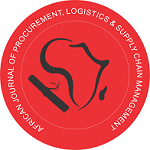| Adjienim Boaterng Adjei
Abstract Sustainable public procurement (SPP) has emerged as a powerful way to stimulate more sustainable consumption and production patterns for society at large. This brief examines the reasons behind the current drive towards sustainable public procurement, and the barriers that have to be overcome in order to implement it. A significant share of the world’s GDP is associated with expenditures by governments. On average, total public expenditures by central and local governments (including consumption and investment expenditures) are estimated to account for about 20% of GDP in OECD countries, and roughly 15% in non-OECD countries. Subtracting compensation to public employees, public procurement is estimated to represent 6% to 10% of GDP depending on countries. In addition, in some sectors, domestic government procurement tends to be the single most important source of sales (e.g. defence-, health- and research-related industries) or one of the most important (e.g. construction, energy, transport equipment). There are however significant differences between countries in the ranking of most other sectors and the size of public procurement market shares. For instance, purchases of office equipment in Canada by public authorities represented over one-third of total demand in the beginning of the nineties, but less than 5% in Japan or Austria. Governments have increasingly become involved in making their procurement “greener” or more sustainable. While green procurement and sustainable procurement refer to different concepts (see Box 1), the underlying idea is the same: to use public procurement in order to achieve desirable environmental and, in the case of sustainable public procurement, social outcomes. Keywords: Public Procurement, Sustainable Consumption, Production Patterns |
UPDATES
- Total Quality Management Practices, Organisational Culture and Firm Performance; Service or Product Innovation
- Process and Supplier Capability, Collaboration in New Product Development and Competitive Advantage: The Moderating Effect of Research and Development Capability
- Demand and Supply Characteristics, Supply Chain Strategy and Business Performance
- The Effect of Transactional Costs and Competitive Tendering on Public Procurement Performance
- The Role of Organizational Culture as a Moderating Factor in the Relationship Between E-Procurement Adoption, Procurement Performance, and Value for Money
- The Influence of Corporate Governance on Strategic Procurement and Competitive Advantage
- Senior Management’s Influence on Supplier Selection and Procurement Performance
- Enforcing Ethical Codes of Conduct in Procurement and Its Impact on Public Procurement Performance in Ghana
- The Influence of Supplier Relationship Management on Supply Performance: The Moderating Effect of Employee Commitment
- Transport Cost Minimization and Performance of State-Owned Transport Companies: The Role of Innovative Capability

